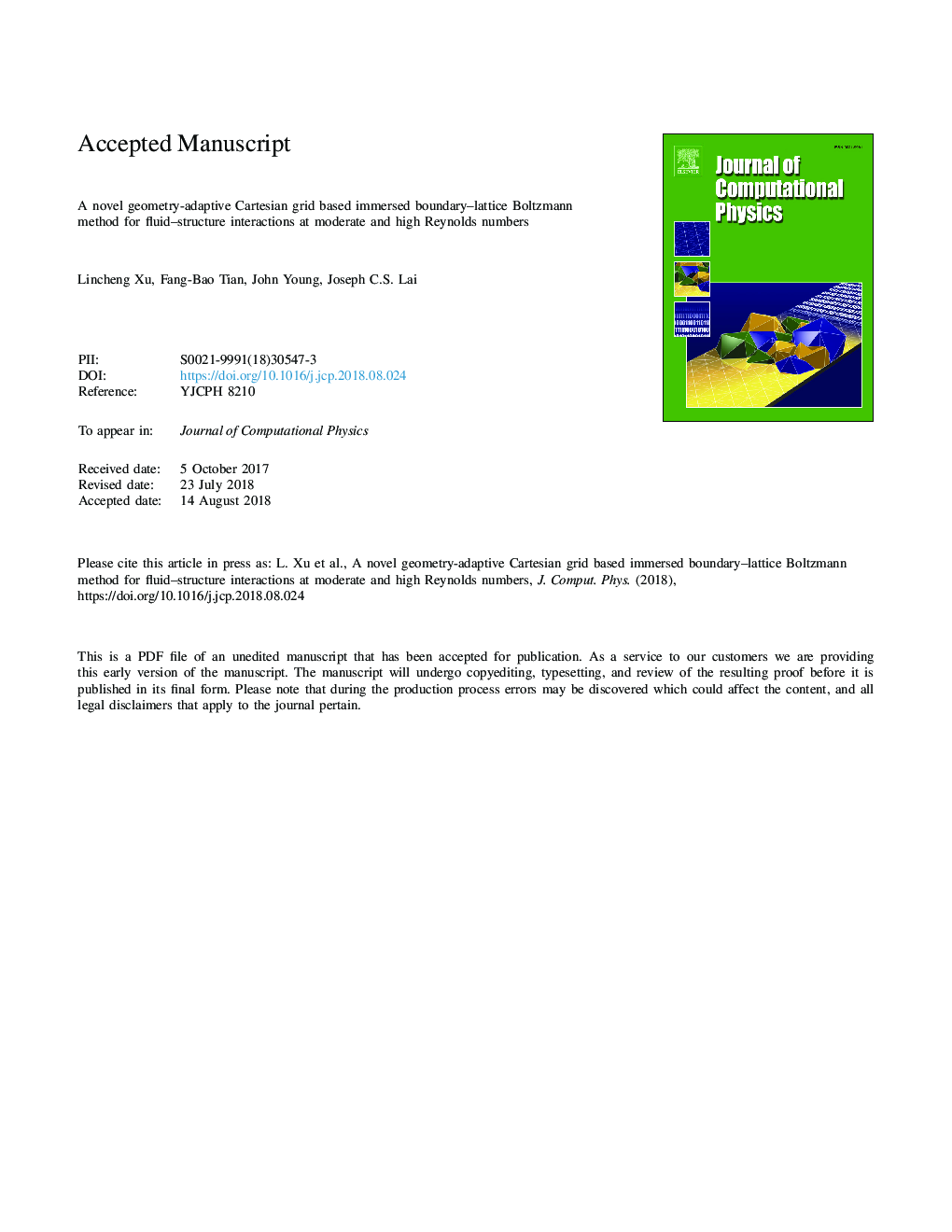| کد مقاله | کد نشریه | سال انتشار | مقاله انگلیسی | نسخه تمام متن |
|---|---|---|---|---|
| 8953889 | 1645968 | 2018 | 55 صفحه PDF | دانلود رایگان |
عنوان انگلیسی مقاله ISI
A novel geometry-adaptive Cartesian grid based immersed boundary-lattice Boltzmann method for fluid-structure interactions at moderate and high Reynolds numbers
ترجمه فارسی عنوان
یک روش ریاضی هندسی تطبیقی با استفاده از روش بولتزمن بر مبنای غوطه ور شدن مرز غوطه وری شبکه ای برای تداخل ساختار مایع در اعداد رینولدز متوسط و بالا
دانلود مقاله + سفارش ترجمه
دانلود مقاله ISI انگلیسی
رایگان برای ایرانیان
کلمات کلیدی
موضوعات مرتبط
مهندسی و علوم پایه
مهندسی کامپیوتر
نرم افزارهای علوم کامپیوتر
چکیده انگلیسی
A novel computational framework which combines the lattice Boltzmann method (LBM) and an improved immersed boundary method (IBM) based on a dynamic geometry-adaptive Cartesian grid system is introduced for the fluid-structure interaction (FSI) problems at moderate and high Reynolds numbers. In this framework, the fluid dynamics is obtained by solving the discrete lattice Boltzmann equation. The boundary conditions at the fluid-structure interfaces are handled by an improved IBM based on a feedback scheme, which drives the predicted flow velocity (calculated after the LBM stream process without the IBM body force) near the immersed boundaries to match the solid velocity. In the present IBM, the feedback coefficient is mathematically derived and explicitly approximated. The Lagrangian force density is divided into two parts: one is the traction caused by the predicted flow velocity, and the other is caused by the acceleration of the immersed boundary. Such treatment significantly enhances the numerical stability for modelling FSI problems involving small structure-to-fluid mass ratios. A novel dynamic geometry-adaptive refinement is applied to provide fine resolution around the immersed geometries and coarse resolution in the far field. The overlapping grids between two adjacent refinements consist of two layers. In order to enhance the numerical stability, two-layer “ghost nodes” are generated within the immersed body domain which is a non-fluid area. The movement of fluid-structure interfaces only causes adding or removing grids at the boundaries of refinements and consequently a high mesh-update efficiency is guaranteed. Finally, large eddy simulation models are incorporated into the framework to model turbulent flows at relatively high Reynolds numbers. Several validation cases, including an impulsively started flow over a vertical plate, flow over stationary and oscillating cylinders, flow over flapping foils, flexible filaments in a uniform flow, turbulent flow over a wavy boundary, flow over a stationary sphere and a dragonfly in hovering flight, are conducted to verify the accuracy and fidelity of the present solver over a range of Reynolds numbers.
ناشر
Database: Elsevier - ScienceDirect (ساینس دایرکت)
Journal: Journal of Computational Physics - Volume 375, 15 December 2018, Pages 22-56
Journal: Journal of Computational Physics - Volume 375, 15 December 2018, Pages 22-56
نویسندگان
Lincheng Xu, Fang-Bao Tian, John Young, Joseph C.S. Lai,
